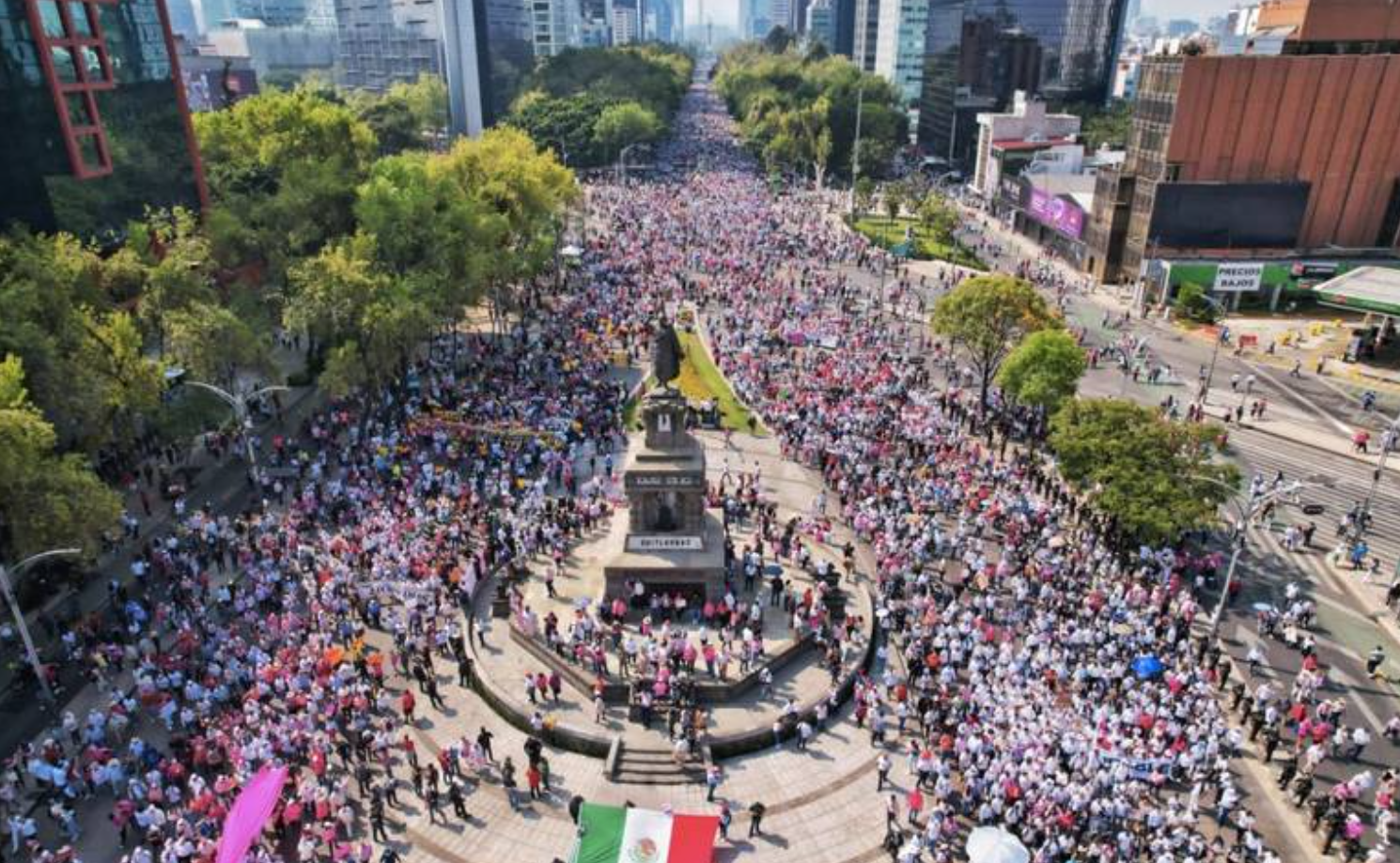Sunday’s march in defense of the National Electoral Institute (INE) and democracy in Mexico was an absolute success for its organizers. It had been a long time since such a massive event had taken place in the country’s capital. The citizens who marched demanded the federal government, headed by Andrés Manuel López Obrador (AMLO), to withdraw its electoral reform project, which, in fact, reduces the autonomy of INE.
For several years now, AMLO has been trying to undermine INE’s autonomy and budget. His reform project is his most recent and crude attempt to subject the institute to his orbit of influence, thus guaranteeing his Morena Party an advantageous electoral board. That anti-democratic objective was buried on Sunday. It is clear that the electoral reform will not pass, and not because the parties do not accept it (which also happens), but because it was the citizens themselves who said “enough”.
The reaction of the ruling party to the march was the same as always: disqualification and insults. It is striking, however, that one of the main questions of the Government to the participants is that they are from the “middle class”. They are not entirely wrong, the demand for democracy in Mexico has historically been a demand of the urban middle classes, particularly in Mexico City (CDMX).
The concept of the “middle class” in the country is very broad. According to a survey, 6 out of 10 Mexicans consider themselves middle class. And although it is not as easy as officialism pretends to mark the social lines clearly, a cursory look at the past reveals that, in effect, it has been the middle and urban social strata that demanded a democratic change in the country.
The years that Mexico lived in democracy during the 20th century can be counted on the fingers of one hand. 14 months with Francisco I. Madero between November 1911 and February 1913, and the years after 1996 when INE acquired autonomy from the executive power. Apart from that, during the rest of the century, the country lived in disorder or under authoritarian regimes such as the hegemonic Institutional Revolutionary Party (PRI, 1929-2000).
Emerging from the ashes of the Mexican Revolution (1910-1920), the PRI was formed in its beginnings as a federation of revolutionary caudillos who decided to stop fighting wars in order to better share power. They thus created a great political institute that would accommodate the entire “revolutionary family”, which would thus conserve and access power in a peaceful and orderly manner for the next seven decades.
The PRI’s formula of incorporating and accommodating interests within the PRI worked like a charm, and so groups and organizations continued to join the party. So much so that by 1934, under the government of Lázaro Cárdenas, the PRI changed its profile and became a party of the masses of workers and peasants organized respectively in the Confederation of Mexican Workers (CTM) and the National Peasant Confederation (CNC).
In 1943, the PRI would form a third sector to embrace the country’s growing middle class under the umbrella of the National Confederation of Popular Organizations (CNOP). This sector would bring together urban professionals and popular organizations of all kinds: bureaucrats, micro, small and medium-sized businessmen, neighborhood organizations, professionals, independent workers, retirees, pensioners, transportation workers, young people, and university students, working women, and heads of household, etc. Urban middle-income sectors.
Years before, however, the National Action Party (PAN) was founded in CDMX as a center-right Christian Democrat party with the clear objective of seeking a democratic change in the country. For decades the PAN carved out a niche for itself among the urban middle classes who, although perhaps not sharing its ideology, saw in it an anti-PRI vehicle through which to express a desire for change.
On the left, it was not until 1977 that a political opening took place which allowed parties of that orientation to become vehicles for democratic aspirations as well. This was particularly true in the case of the CDMX. The numbers do not lie: already in 1976, during the full heyday of the PRI, the votes for the opposition in the country’s capital were triple the national average.
The CDMX does not have a leftist vocation but an opposition vocation. Those middle classes that AMLO reviles day in and day out have historically been the opposition to authoritarianism in the country. In the 20th century they stood up to the authoritarianism of the PRI, and in the current century they are doing the same in the face of AMLO’s attempt at authoritarian regression disguised as “electoral reform.”
What lessons can be drawn from this farce? Three very clear lessons. One is that the reform as such is dead and buried, the march passed over it and crushed it. Two, the citizenry stopped power in its tracks. AMLO knew the limits of his forces and that society’s patience also has its limits. And three, the mayor of CDMX and the president’s favorite to succeed him, Claudia Sheinbaum, was the big loser of the day. By trying to make herself look good to her boss by disqualifying the citizens who participated in the march, she shot herself in the foot by antagonizing her own voters who gave her their trust in 2018 to govern the city.
Indeed, while it is true that it was the urban middle strata of the country that drove the democratic transition in the country (1977-1996) largely through the PAN, it is also true that their votes are not the patrimony of the right or the left. In fact, what we have seen in Mexico in recent elections is that the partisan loyalties of middle-class voters are quite flexible. AMLO himself has been voted for by those middle-class sectors of the capital to whom he owes his rising political career. He was even supported by these sectors in 2005 when the government of Vicente Fox (2000-2006) clumsily tried to prevent him from competing for the presidency by bringing criminal charges against him. Tens of thousands of people, like this past Sunday, took to the streets to support him in the defense of his political rights. I know this firsthand because I was there.
*Translated from Spanish by Janaína Ruviaro da Silva
Autor
Political scientist and economist. PhD from the University of Toronto. Senior Editor at Global Brief Magazine. Social Research Design Specialist at RIWI Corp. (Real-Time Interactive World-Wide Intelligence).











